- News
- Reviews
- Bikes
- Accessories
- Accessories - misc
- Computer mounts
- Bags
- Bar ends
- Bike bags & cases
- Bottle cages
- Bottles
- Cameras
- Car racks
- Child seats
- Computers
- Glasses
- GPS units
- Helmets
- Lights - front
- Lights - rear
- Lights - sets
- Locks
- Mirrors
- Mudguards
- Racks
- Pumps & CO2 inflators
- Puncture kits
- Reflectives
- Smart watches
- Stands and racks
- Trailers
- Clothing
- Components
- Bar tape & grips
- Bottom brackets
- Brake & gear cables
- Brake & STI levers
- Brake pads & spares
- Brakes
- Cassettes & freewheels
- Chains
- Chainsets & chainrings
- Derailleurs - front
- Derailleurs - rear
- Forks
- Gear levers & shifters
- Groupsets
- Handlebars & extensions
- Headsets
- Hubs
- Inner tubes
- Pedals
- Quick releases & skewers
- Saddles
- Seatposts
- Stems
- Wheels
- Tyres
- Health, fitness and nutrition
- Tools and workshop
- Miscellaneous
- Buyers Guides
- Features
- Forum
- Recommends
- Podcast
BUYER'S GUIDE
 Everything you need to know about disc brakes Nov 2021
Everything you need to know about disc brakes Nov 2021Everything you need to know about disc brakes - read our definitive guide
Disc brakes have been used on the road for years but in the last couple of seasons they've become mainstream as major bike makers have offered disc-equipped bikes covering all sectors of the market from gravel bikes to endurance bikes to full-on road race rigs. With the UCI now allowing them in the professional peloton, discs are an ever more familiar part of the road riding landscape.
-
Disc brakes provide better stopping power than rim brakes, especially in wet or cruddy conditions
-
A bike with disc brakes will still be rideable with a broken spoke or damaged rim, problems that can stop a rim-braked bike dead in its tracks
-
They're more expensive, but disc brakes with hydraulic hoses to get braking force from lever to pad work better than cable-actuated systems
-
Semi-hydraulic calipers like TRP's Hy/Rds are a sensible compromise upgrade
9 of our favourite disc brakes
- Shimano Tiagra ST-4720 STI & BR-4770 brakes — £187.99/brake & lever
- TRP Hylex RS brakes — £130
- Shimano 105 R7020 — £425.00/set
- TRP Spyre Mechanical Disc Brakes — £43.00-£55.00
- Yokozuna Motoko — £285/pr
- TRP Hy/Rd mechanical interface hydraulic disc brakes — £75.00/brake
- Shimano RS-505 hydraulic discs — £249.00/pair
- Shimano BR-R785 Di2 road hydraulic discs — £296.64/pair
- SRAM Rival 22 shifters/hydraulic disc brakes — £235.99/brake
What are the advantages of disc brakes?
Let’s start right at the beginning. We’re all familiar with traditional bicycle rim brakes where the brake pads operate on the wheel’s rim, right? With a disc brake the pads instead act on a metal rotor that’s attached to the wheel’s hub. Simple enough.
What’s the advantage of that? People sometimes say that they can easily lock up the wheels of a road bike, stopping them totally with very little effort, so there’s no point in having any more power.
One key point is that disc brakes can offer more control than rim brakes before they lock up. You have more of a braking range with which to work, so you’re less likely to skid.
SRAM’s Product Manager Paul Kantor told us, “I can certainly lock up my wheel with a carbon rim and a mechanical rim brake, but if I do that I’m still just sliding down the road and that sucks. Locking up the wheel isn’t hard but if that were our goal we’d just sell you a stick that you could ram in there and you’d be done!
“Everything we’ve focused on is prior to locking up the wheel. You can take off more speed with greater control prior to locking up the wheel. Some people refer to that as ‘modulation’. That’s a term we don’t really care for, but it’s fine. We’re really talking about decelerating substantially without locking up the wheel.”
With a rim brake system, you want the wheel rim to be as light as possible, you need it to be strong, and it also has to provide the braking surface. Anyone who has ever ridden carbon-fibre rim brake wheels knows that while they might be lightweight and fast, the braking performance isn’t brilliant, especially in wet conditions.
A disc brake system allows manufacturers more scope to innovate with the braking surface because it doesn’t need to operate as the wheel rim too. Shimano, for example, equips its hydraulic disc brakes with what it calls Ice Technology that features a rotor with a three-layer sandwich structure of stainless steel and aluminium. It says that this provides a better radiation performance that reduces the temperature while braking.
Plus, with a disc system the braking surface, the rotor, is much further from the road than it is with a rim brake so it’s less likely to get wet from surface water. There are holes in a rotor that allow water to get out from underneath the brake pads too. The result is that disc brakes are far less likely than rim brakes to be affected by water or gunk thrown up from the road.
With a rim brake, the tyre has to pass through the brake calliper, but that's not the case with discs, so they free up space for wider tyres. That's part of the reason why discs have become popular for endurance and adventure bikes.
Linked to that, a side benefit of disc brakes is that your wheel can go out of true without rubbing on the brake pads.
Mechanical or hydraulic disc brakes?
You can divide disc brakes up into two types: mechanical and hydraulic.
Mechanical systems are operated by a cable, like the vast majority of rim brakes, while hydraulic systems use fluid to transfer the force from the lever to the calliper.
Pulling the brake lever in a hydraulic system moves a piston inside the master cylinder which forces brake fluid towards the brake calliper. This acts on the pistons in the brake calliper to push the brake pads against the disc rotor.
Mechanical disc brakes tend to be cheaper. TRP’s Spyre mechanical disc brakes, for example, are priced £69.99. You can use them with standard (non-hydraulic) dual-control levers. The Spyre is a dual piston design meaning that two pistons move equally against the rotor, as opposed to the single piston design of the Avid BB7 and Shimano CX75 mechanical disc brakes.
Hydraulic brakes are higher end and they perform better than either rim brakes or mechanical discs in just about every respect, but they’re more expensive. A SRAM Rival 22 hydraulic disc brakeset (you get both the shifter and the brake calliper), for example, is £302.
Hydraulic systems are more efficient than mechanical disc brakes so you need to apply less pressure at the lever for an equal level of braking power. This means you can get better modulation.
A hydraulic system is sealed so no contaminants can get in to affect braking performance, and complicated internal cable routing isn’t a problem, whereas it can add friction to a cable setup.
TRP’s Hy/Rd brakes are unusual in that they’re cable operated with hydraulic power in the callipers. We found them powerful, easy to live with, and the best solution so far for disc brakes with conventional brake/gear levers.
What about heat?
Whatever type of system you use, braking produces heat. There used to be concerns about the safety of carbon rim brake wheels during prolonged, heavy braking – we’re talking about Alpine-style descents here – but manufacturers seem to have got that technology sorted.
When it comes to discs, fade (the loss of braking power) can occur as a result of the buildup of heat in the system.
Shimano identified overheating as being of particular concern for discs on the road, the longer, faster descents (and smaller rotors) being likely to result in rotors and pads heating up more than they do off-road.
As mentioned above, to counter this Shimano’s IceTech rotors use a three-layer sandwich structure of stainless steel and aluminium, the aluminium being included because it transfers heat better than steel. These have wavy aluminium sections inboard of the brake track designed to maximise surface area for improved cooling. The pads have cooling fins that are made from aluminium for the same reason.
Check out the hottest disc-equipped road bikes.
Speaking about the development hydraulic brake systems, SRAM’s Paul Kantor said, “Where you might have trouble is with some big guy riding down the Stelvio for 45 minutes dragging the brake, and we were worried that we’d have boiling issues there. But what happens is that the brake reaches a steady state where the heat isn’t increasing.
“What we did see is that when we decelerated from 50-60kph down to 15kph in 1-2 second increments on a switchback descent there was friction fade where you’d lose some of your coefficient of friction in the pad. That is much better than having the system boil.
“We could induce this on a 140mm rotor so we altered the backing surface on the pad to dissipate that heat way better. So now we have a very small window where you could induce some friction fade if you were really trying to do it but we have had next to no issues with boiling the system.”
Disc size
Discs are available in different sizes. All other things being equal, a large disc will slow you down faster than a small disc.
Shimano's road disc brake system has been designed for use with 140mm or 160mm rotors, the idea being that users can choose the size to suit their weight and intended use.
SRAM’s Paul Kantor said, “We recommend 160mm rotors front and rear for road use and 140mm is fine for cyclocross. We have tested 140s extensively but we like the margin of safety that 160s offer for the road.”
Focus has told us that in testing it found 160mm rotors preferable to the more common 140mm, handling the buildup of heat more effectively. This goes against the trend for smaller rotors, which is largely the result of Shimano recommending 140mm rotors for all but the largest cyclists.
The choice is yours but if you’re a larger rider you might want to start with 160s and see how you go.
Mounting standards
There are different standards for fixing disc brakes to road bikes but Shimano’s road-specific Flat Mount system, announced in 2015, is becoming dominant.
"This new design allows consumers to move away from the mountain bike history and look, which has been used until now, using a method better suited to high performance road bike riding,” says Shimano.
Shimano’s Flat Mount is an open standard meaning that other manufacturers are free to use it. SRAM has recently adopted it too.
With Flat Mount the brake callipers attach directly to the frame or fork, offering a cleaner and more minimalist appearance than with a post mount system. It also provides a more compact packaging of the brake calliper, which is a particular benefit at the rear triangle.
The bolts thread into the bottom of the calliper rather than in from the top as is the case with post mount brakes. At the chainstay that means the bolts no longer thread into inserts in the frame, but pass through the chainstay from the bottom so there’s less chance of damaging an expensive carbon frame. Because the bolts thread in from the bottom of the calliper, the front brake must be used with a slim adaptor.
Quick release or thru-axle?
A disc brake puts forces on a wheel that are different from those of a rim brake, so keeping that wheel in its correct position and avoiding flex in the axle and dropout become challenging.
One way to keep the wheels in place is to use thru axles where the ends of the dropouts are closed and a removable pin goes completely through the axle to hold it in place. This adds security but it also adds a little weight and makes swapping wheels a touch more difficult.
Focus has come up with what it calls Rapid Axle Technology – RAT, for short – design to simplify the process. The RAT thru-axle is a design that requires just 90° rotation of the axle in the dropout to close the lever.
Some disc brake road bikes still use standard quick releases, like the Triban RC 520 but most use thru axles, like the Focus Izalco Disc. Others go with one quick release and one thru-axle. We’re still in a period of change and it’s not clear how the market is going to settle, or whether it will settle at all; it could be that different manufacturers continue to use different systems.
Aerodynamics
Many road bikes these days are designed with a focus on aerodynamics, partly because the UCI has a 6.8kg minimum bike weight limit for racing. There’s little point in a manufacturer focusing on bringing down weight but it can reduce drag in order to gain an advantage. How do disc brakes fit into this picture?
For a few years now bike manufacturers have been working on incorporating discs so that they are as aerodynamically efficient as possible.
When Giant introduced the latest version of its Propel aero road bike it said, “Engineers... found that, with proper integration, a disc-brake design can actually improve aero performance compared to rim-brake configurations.”
That was a significant claim because one of the arguments often put forward against disc systems was that they increased drag.
“This is because the location of traditional callipers (either in front or behind the fork crown/ legs) creates 'dirty' air," said Giant. "Opening up the fork crown area (by placing the disc-brake callipers down at the hub) means that the air hitting the new disc-brake calliper has already been disrupted by the leading edge of the tyre/wheel. This effect is further enhanced by an asymmetric fork that helps smooth out airflow over the calliper.”
Other manufacturers have since claimed that they can make disc brake bikes that are at least as efficient as their rim braked alternatives, and many top-end bikes are now available only with disc brakes – there is no rim brake option.
The professionals
Like it or not, what the professionals ride has a massive influence on the road bike market. After all, that’s the main reason that sponsorship exists. When pro riders use a particular product others follow, and that’s why it’s so significant that the UCI allows disc brake equipped road bikes in the peloton.
Pro teams were initially allowed to try out disc brakes in races towards the end of the 2015 season and after some ups and downs they're now permitted.
There's still some resistance to discs among pros, and there have been claims of riders sustaining injuries from disc rotors in crashes, so we may never see universal adoption of discs, but superior bike control on descents and in the wet may sway the skeptics.
That said, a some notable riders are very much rim-brake hold-outs. All three 2020 grand tours were won on rim-brake bikes: The Tour de France by Slovenian phenomenon Tadej Pogačar of UAE Team Emirates on a Colnago; the Giro d'Italia by British rising star Tao Geoghegan Hart of Ineos Grenadiers on a Pinarello; and the Vuelta a España by Primož Roglič of Jumbo–Visma on a Bianchi.
All three teams' bike suppliers make disc brake bikes, and Ernesto Colnago is on record as saying that he believes discs are superior, but for racing the decision still comes down to weight.
Colnago engineer Davide Fumagalli confirmed this to Ben Delaney of Velonews. Fumagalli said the disc-brake version of the Colnago V3Rs weighs 6.95kg, the rim-brake version a little under the UCI 6.8kg limit. That gives riders “more mental freedom to choose wheels, tire, etc.,” he added. That 150g margin might not sound like a big deal, but it's worth a few seconds on a major climb and those seconds add up.
Whether or not road racers are ever fully won over by disc brakes, brands will almost certainly encourage teams to use them as a way of legitimising and validating the technology in the eyes of the bike buying public, and ultimately selling more disc brake road bikes.
Recommended disc brakes
Whether you’re looking to upgrade or thinking your next bike will have discs, here’s our selection of the disc brakes we currently favour.
Shimano Tiagra ST-4720 STI & BR-4770 brakes — £187.99/brake & lever
Shimano's Tiagra Disc levers and callipers are what you should look for on your next commuter or winter bike. They have one less speed than 105 but apart from that you'd be hard pressed to tell the difference without a set of scales. The setup is reasonably easy, and they're light on maintenance and easy to bleed. If you really can't live without 11 speeds at the back they won't be for you, but given the quality of the shifting and the braking, they're a great choice.
Tiagra is a ten-speed groupset, so these brakes will only be useful to you if you already have a Tiagra-equipped bike. However, that covers an awful lot of bikes, as Tiagra bikes with disc brakes almost always come with cable-actuated discs.
Read our review of the Shimano Tiagra disc brakes
TRP Hylex RS brakes — £130 - £140
If you don't have a disc brake-equipped singlespeed bike then you're obviously missing a niche: go out and buy one immediately. If you do, then obviously you'll know they're great. You don't have many options if you want a full hydraulic system on your disc-equipped singlespeed: there's this TRP Hylex system... erm, and that's about it. The good news is that it's an excellent system: easy to fit and service, with plenty of power and modulation available. And if you're looking to build a 1x Di2 bike then you can use Shimano's climbing shifter to make the Hylex Di2 compatible.
Read our review of the TRP Hylex RS brakes
Shimano 105 R7020 — £525.00/set
The first Shimano 105-level disc brakes were pretty good, but with the new hydraulic system, the R7020 lever and the R7070 calliper, Shimano has upped its game significantly. They're still quite expensive as an upgrade, but definitely one to look out for if you're in the market for a new disc-braked road bike.
The new R7020 lever is a full redesign, it's nothing like the outgoing lever. The shape is very much based on the mechanical lever, with the same lever design and a similar hood profile with the textured finish for better grip in the wet. The body of the hood is a bit bigger, especially at the bottom where the hose exits the lever, but it doesn't have the annoying bump that the RS505 lever did: it's a much better overall shape. The extra width of the lever at the bottom meant that the bottom of the hood sat away from the bar tape a bit; it was noticeable close up but not really an issue.
The 105 brakes work brilliantly out of the box, and they're almost entirely fuss-free. These brakes bite when you'd expect them to in the lever travel, and from there there's masses of stopping power available as and when you need it. The reach is adjustable, but there's also a new, smaller lever (R7025) that should be ideal for those with smaller hands. The amount of effort you have to put in to control your speed on the steep, loose back road descents round here is genuinely a revelation compared to rim brakes or mechanical disc brakes.
Once you've got used to the bite point and the amount of squeeze you need, they make difficult roads simple: that's the reason good hydraulics are the best brakes.
Read our review of the Shimano 105 R7020 hydraulic disc brakes
TRP Spyre Mechanical Disc Brakes — £43.00 - £79.99
Buy a mid-range disc brake equipped road bike or cyclocross bike at the moment and there’s an extremely high chance you'll end up with a pair of TRP Spyres bolted to it. In the tidal wave of new disc bike drop bar bikes appearing on the market, the Spyre has become the benchmark for ease of setup, use and reliability. These are excellent, quite possibly the best mechanical disc brake solution out there - more expensive than its predecessor but less expensive than hydraulics.
Yokozuna Motoko — £285/pr
The Yokozuna Motoko disc brake calipers are the lightest option for cable-actuated hydraulic braking. They're easier to set up than their TRP HY/RD rivals, better-looking, include compressionless cables, and have better tool-free adjustment and no performance drawbacks. If you can fit them to your frame with no clearance or cable routing issues they are a great choice as an all-inclusive cable-and-caliper offering.
Read our review of the Yokozuna Motoko disc brake
TRP Hy/Rd mechanical interface hydraulic disc brakes — £75.00/brake
TRP Hy/Rd disc brakes combine cable actuation with hydraulic power right in the calliper. They're powerful, easy to live with and the best solution so far for disc brakes with conventional brake/gear levers. After a month or so testing these brakes in all conditions, we found them to be more powerful and controllable than rim brakes and easier to set up and maintain than mechanical discs, and they win over stem-mounted converters in their simplicity with no noticeable loss in performance.
The price and link above is for post-mount brakes. Flat mount brakes are £80 each when available.
We can't currently find a UK source for HY/RDs at all. If you want to take your chances with the post-Brexit trade barriers, you can get them from Decathlon Belgium for €80 including rotor.
Shimano RS-505 hydraulic discs — £524.99/pair
These are the first '105-level' discs that Shimano offered and they're pretty good, although the new 105 R7000 brakes are tidier. You get the front and rear shifters, disc callipers, pads, cables and hoses included in the package. The callipers are more compact than the post mount ones and they come with Ice-Tech resin pads with heat-sink fins to help with cooling. The front brake has a reversible plate that allows you to run either a 160mm or 140mm rotor at the front. the rear flat mount calliper bolts directly through the frame if you're running a 140mm rotor; if you want a 160mm at the back you need an extra plate between the calliper and the chainstay.
Like the BR-785s below, these are discontinued, but if you encounter them on a secondhand bike, they're well worth a look.
Read our review of the Shimano RS-505 disc brakes
Shimano BR-R785 Di2 road hydraulic discs — NA
These were a very good first incarnation of road hydraulic braking from Shimano. When we first teted them we said: "In use, the brakes are really excellent, with significant improvement in modulation compared to mechanical rim brakes. We racked up hundreds of horrible, wet, dirty commuting miles with these and they brakes operated reliably throughout with no reduction in power or control. If you can afford them, these brakes are very much recommended. They're not without their glitches, but they outperform rim brakes in pretty much every situation."
They're long discontinued but if you find a second hand bike fitted with them, they're a fine option.
SRAM Rival 22 shifters/hydraulic disc brakes — £231.20 - £245.65/brake
SRAM's Rival 22 hydraulic groupset is the lowest tier of its road disc line-up, but for many it provides the ideal combination of performance and price to fit to an all-purpose bike. The hydraulic levers look bulky, but ergonomically they're easy to use and comfortable (with a caveat if you have really small hands). The braking offers great modulation and plenty of power for very little effort. We did get some fade when we dragged one of the brakes on a two-mile descent. Trying to cook both brakes at the same time was impossible: if you're generating enough heat to affect the system then you'll be at a standstill in no time.
Explore the complete archive of reviews of brakes on road.cc
About road.cc Buyer's Guides
The aim of road.cc buyer's guides is to give you the most, authoritative, objective and up-to-date buying advice. We continuously update and republish our guides, checking prices, availability and looking for the best deals.
Our guides include links to websites where you can buy the featured products. Like most sites we make a small amount of money if you buy something after clicking on one of those links. We want you to be happy with what you buy, so we only include a product if we think it's one of the best of its kind.
As far as possible that means recommending equipment that we have actually reviewed, but we also include products that are popular, highly-regarded benchmarks in their categories.
Here's some more information on how road.cc makes money.
You can also find further guides on our sister sites off.road.cc and ebiketips.
road.cc buyer's guides are maintained by the road.cc tech team. Email us with comments, corrections or queries.
Mat has been in cycling media since 1996, on titles including BikeRadar, Total Bike, Total Mountain Bike, What Mountain Bike and Mountain Biking UK, and he has been editor of 220 Triathlon and Cycling Plus. Mat has been road.cc technical editor for over a decade, testing bikes, fettling the latest kit, and trying out the most up-to-the-minute clothing. He has won his category in Ironman UK 70.3 and finished on the podium in both marathons he has run. Mat is a Cambridge graduate who did a post-grad in magazine journalism, and he is a winner of the Cycling Media Award for Specialist Online Writer. Now over 50, he's riding road and gravel bikes most days for fun and fitness rather than training for competitions.
Latest Comments
- Rendel Harris 3 sec ago
What this research is lacking is any evidence as to how often cyclists hit any sort of bollard - I've never seen it happen. Unless it's actually a...
- Daclu Trelub 6 hours 57 min ago
A bit like underarm, surely?
- hand0j1n 8 hours 12 min ago
Hopefully the new device is a big success, but wahoo do have a lot work to do in terms of convincing that their quality control has improved. ...
- chrisonabike 7 hours 2 min ago
Agree that the moaning comes from a place of priveledge and ultimately "if only there weren't so many other people driving"....
- Simon E 8 hours 47 min ago
Have added some clarification....
- Simon E 8 hours 56 min ago
I was tempted to try Galibier gloves but opted for Endura Freezing Point from LBS last year. Not cheap (£60, I think). I'd prefer a shorter cuff...
- Simon E 9 hours 34 min ago
I can't wait that long! Here's a series that any good vlogger / 'grammer would surely recognise....
- Simon E 9 hours 43 min ago
At 2.30pm on Saturday a small hatchback car "came to rest on its side in a precarious position" near the hamlet of Ratlinghope on the west side of...
- IanMK 10 hours 20 min ago
I do wonder if Highway Planners and Councils understand all the implications of putting in traffic calming measures. They certainly take no...
- Oldfatgit 10 hours 39 min ago
How long before some waste of DNA complains about them on the footpath ... or for Grimsby [and the other shit-tips] to ban them ...



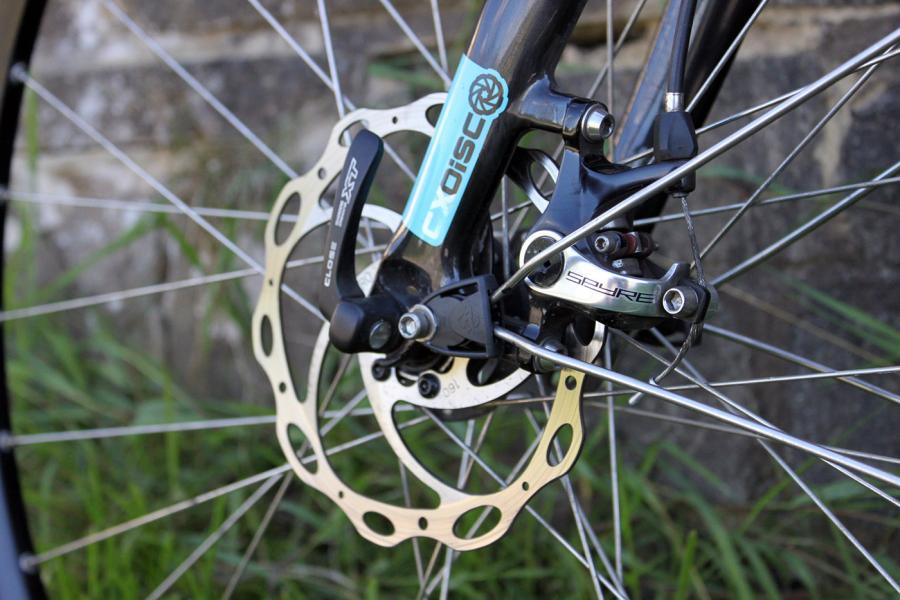

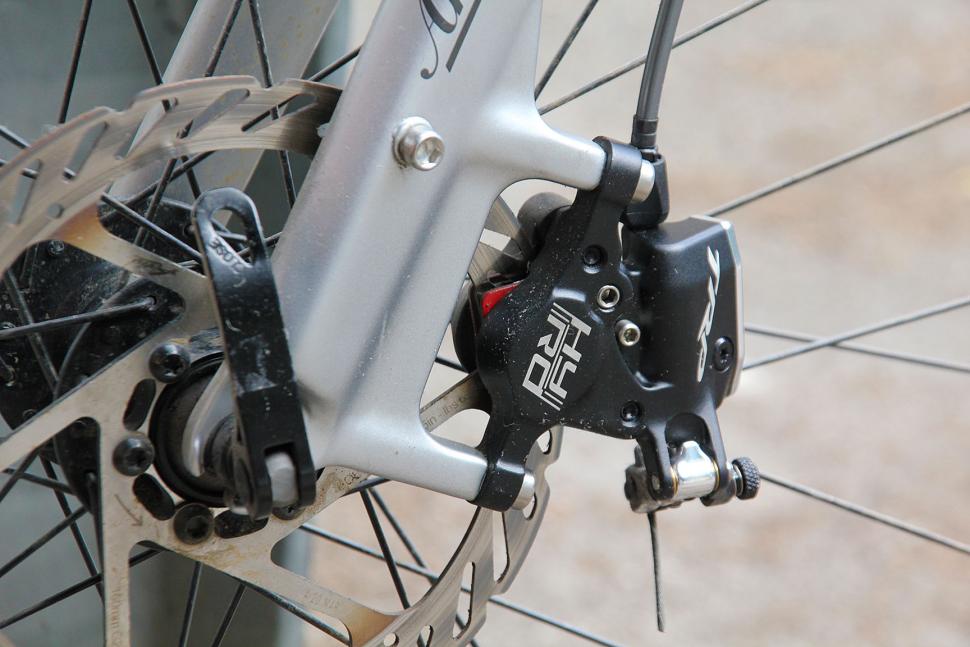

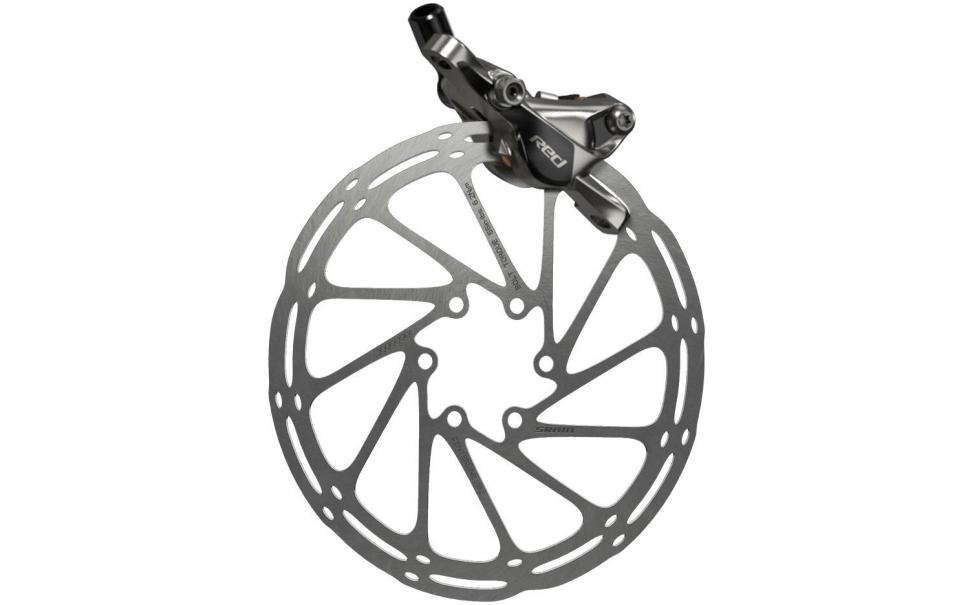
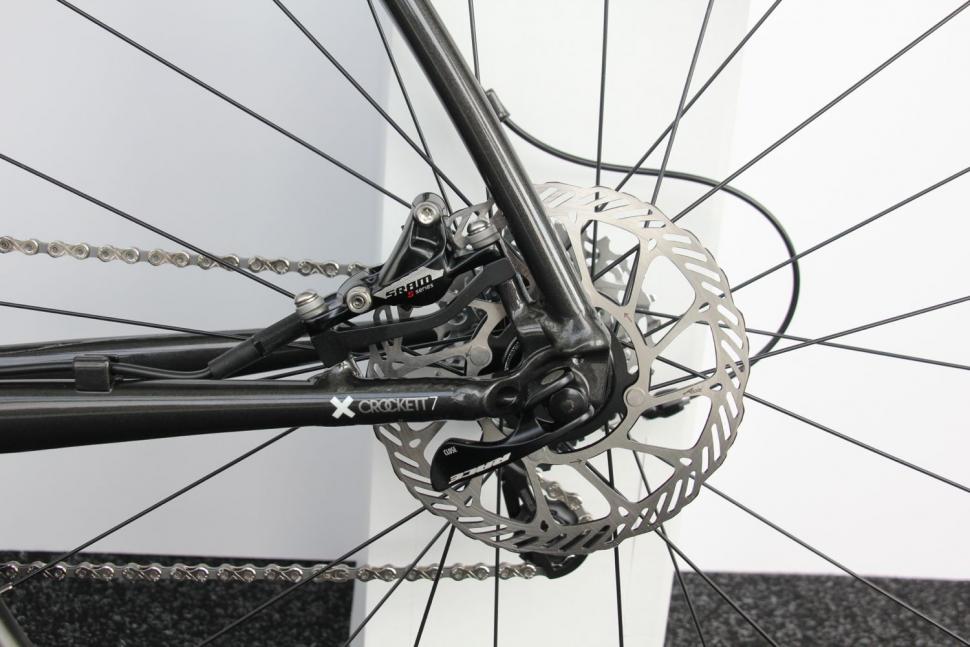
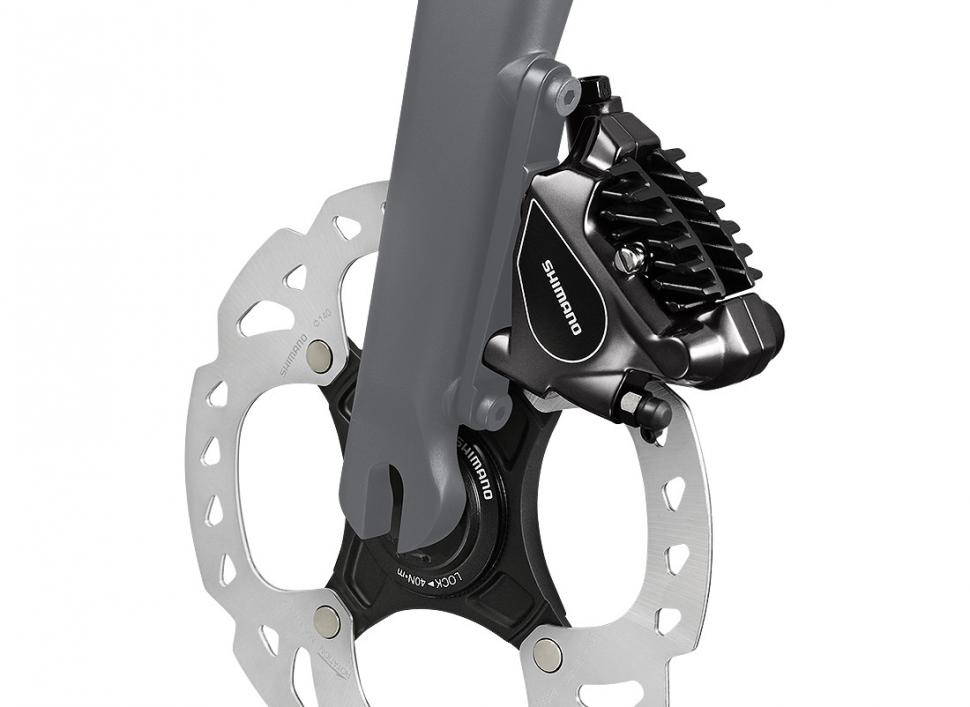
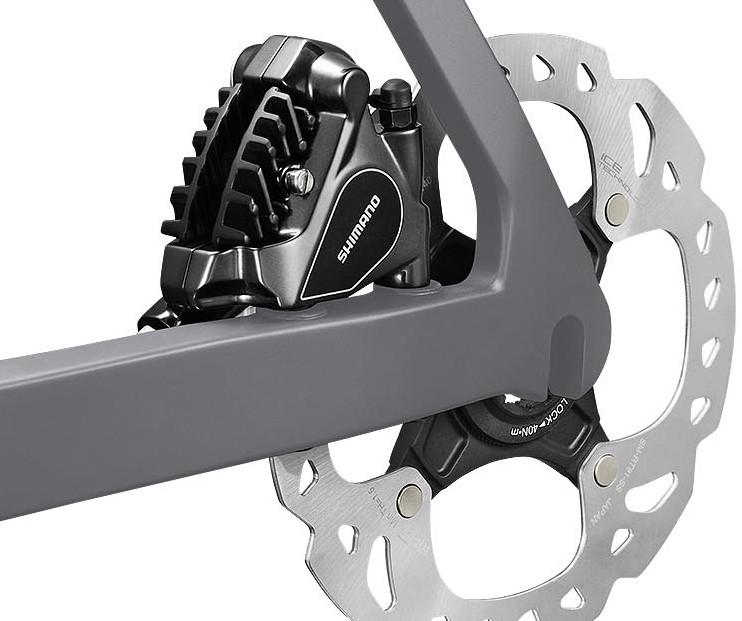
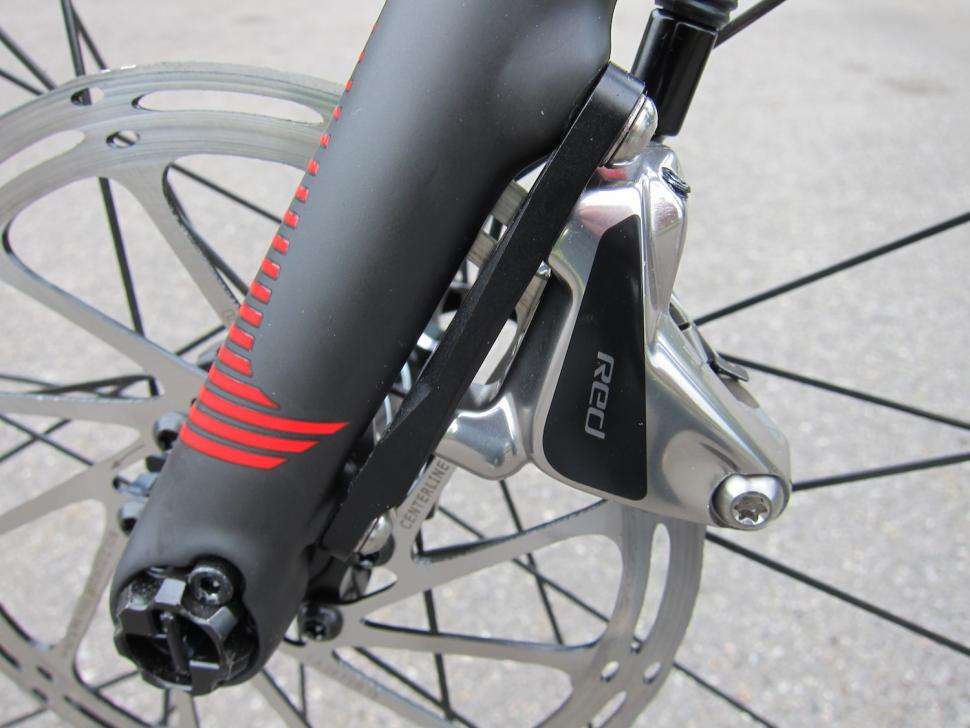
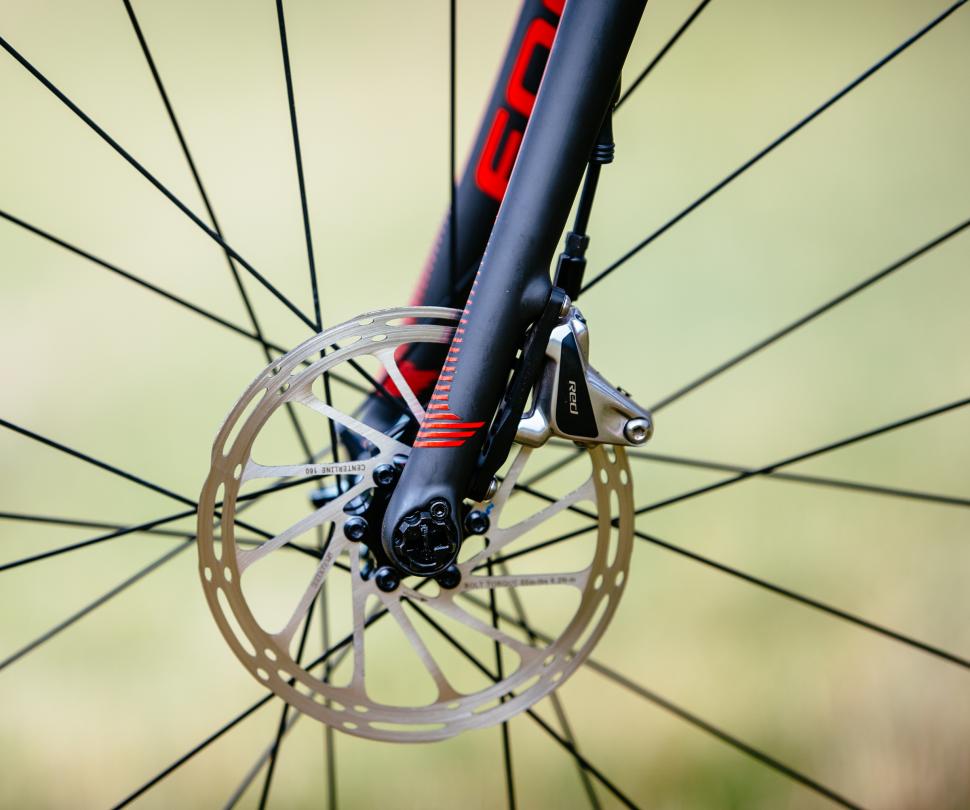

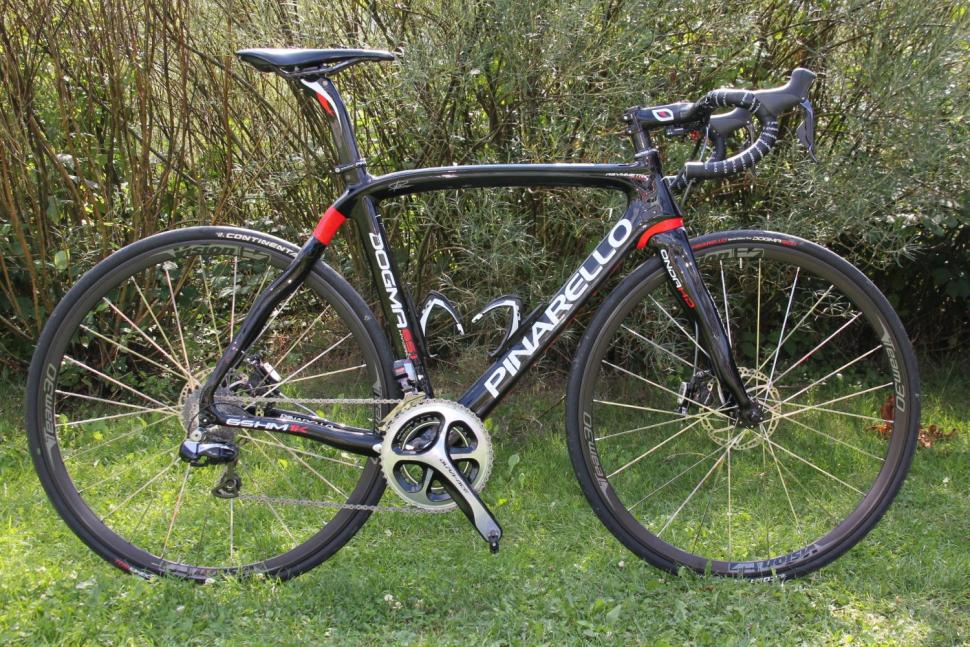
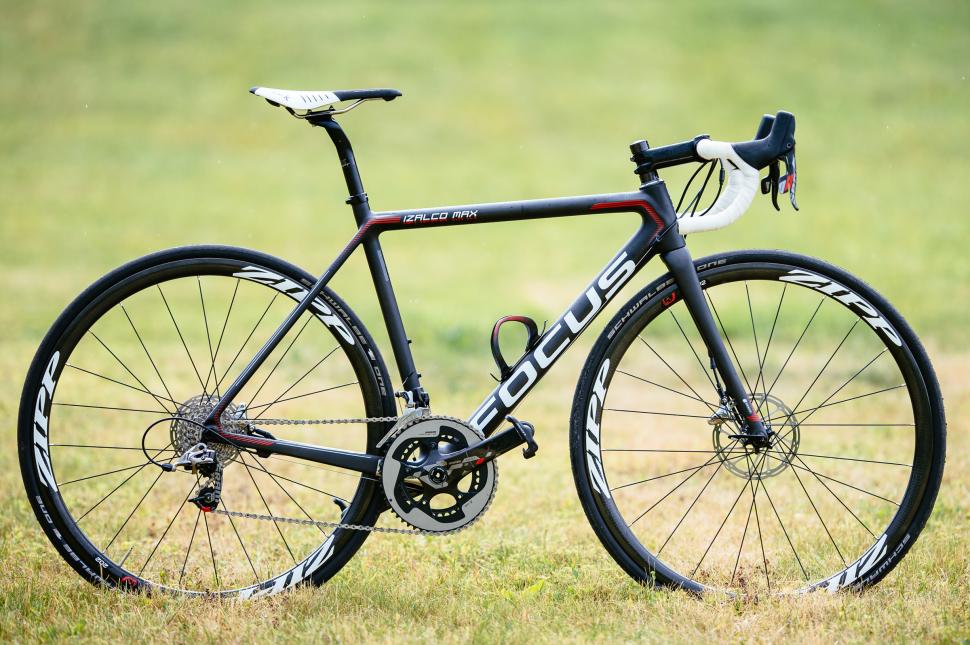
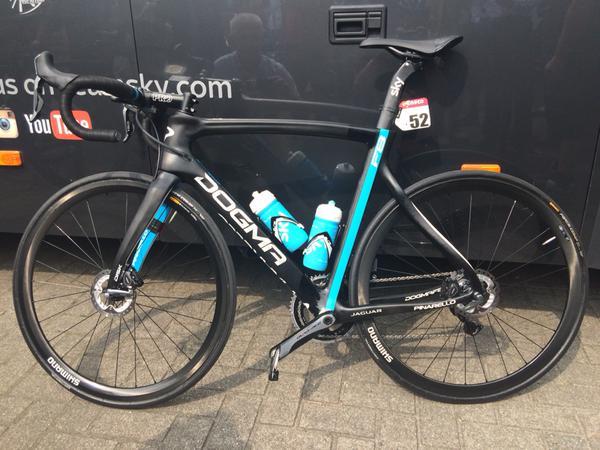

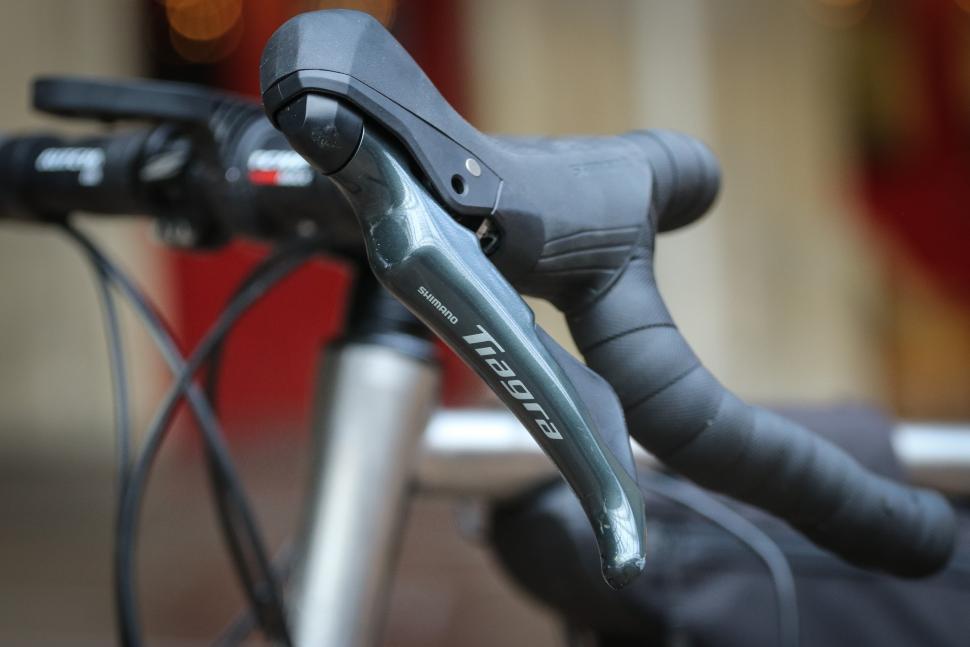
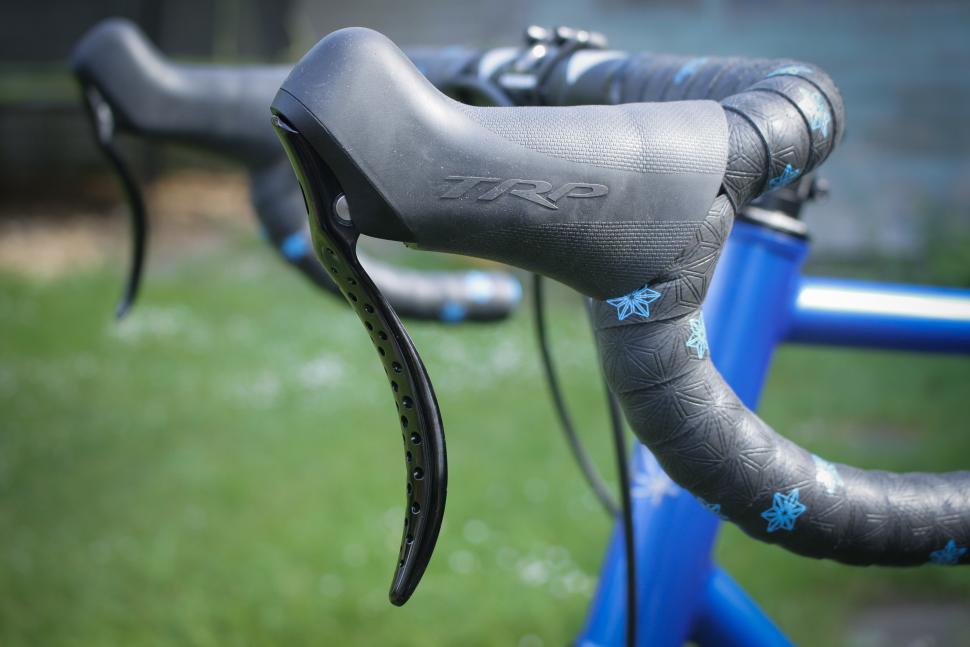
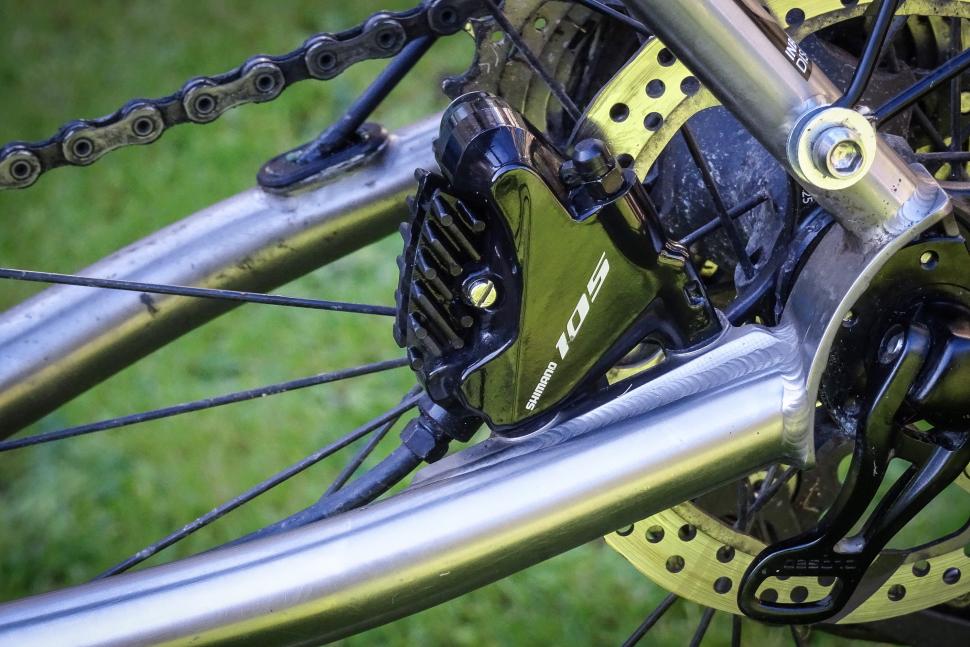
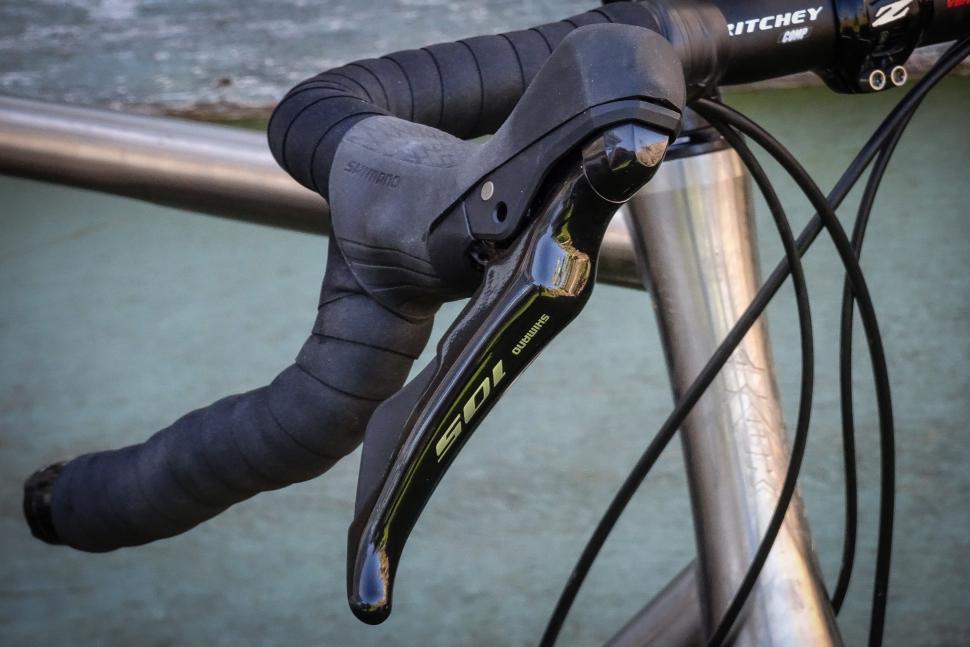
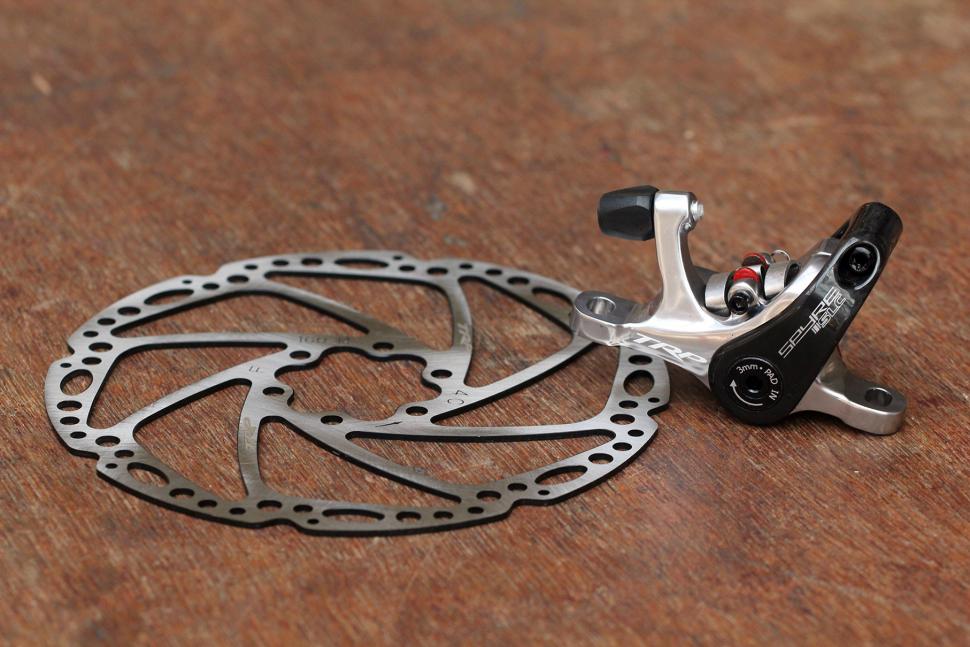

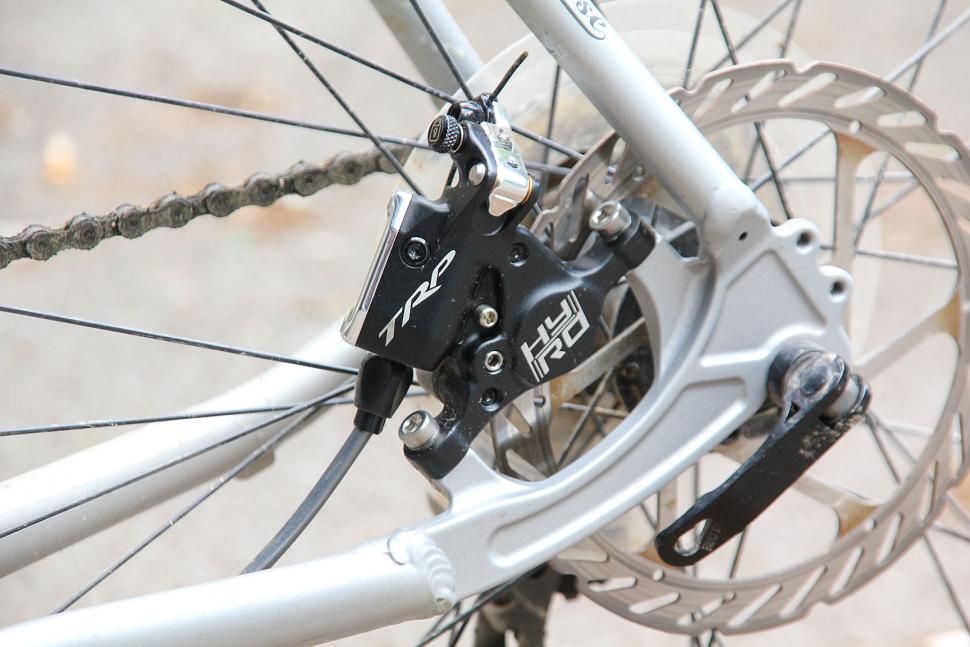
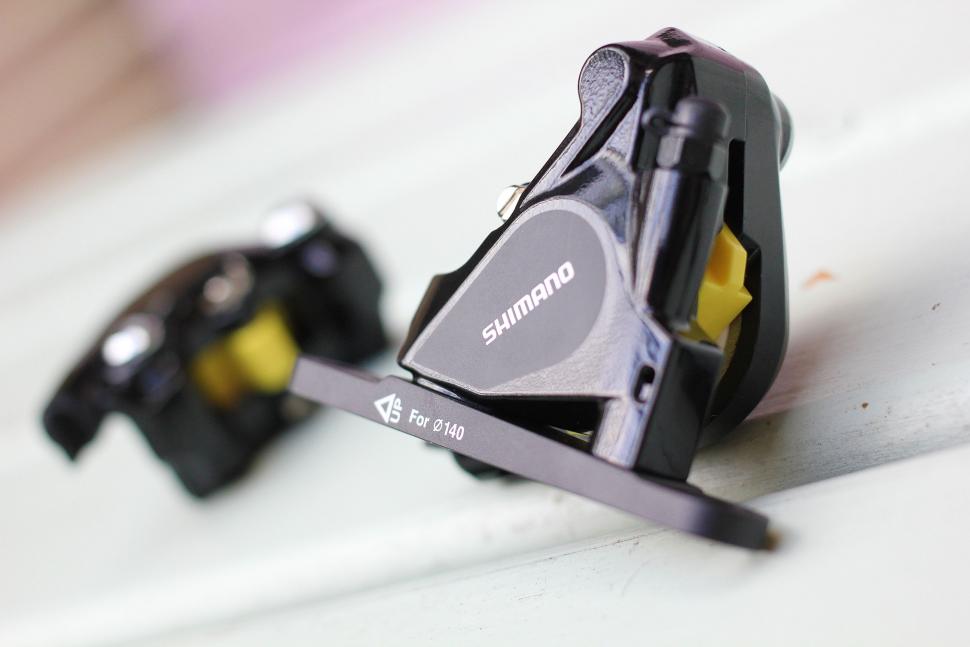
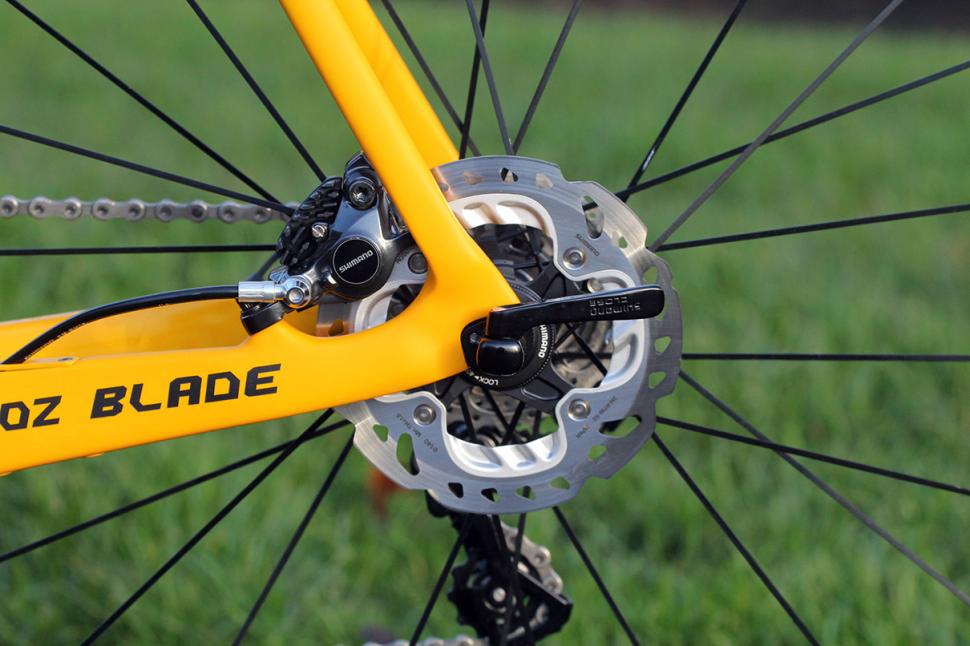

Add new comment
72 comments
I'm sorry ... disc pads don't last as long as rim pads? You've got that the wrong way round!!!!
I have ridden with discs on my MTB since around 1999 and have had discs on my utlility bike since around 2007, and my road bike for just over a year. So, from considerable experience I can say with confidance that disc pads last significantly longer than rim pads.
Buy some disc brake cleaner (muc-off stuff is good) and you don't need to buy new pads when they are contaminated, you just clean them up.
Not really. 1. There is a limitation in the surface area used on rim brakes (yes they could make that area bigger, which would help). 2. In order to keep wheel weight down rims are carbon or alu, which are fairly soft, and so the pads have to be soft and the force being applied has to be limited in order to ensure bits don't wear too quickly and things don't bend (the rim brake surface can flex inward when brakes are applied, reducing the brakes effectiveness).
With discs, the rotors are steel, so wear isn't a problem, and the pads push against a flat bit of metal on either side, so no flexing of the braking surface. Much more force can be applied and pad material can be chosen to reduce wear and better handle heat.
i.e. the whole disc system is much more efficient as well as being more powerful.
That has actually been done. Among one or two others, Cotic stuck the caliper on the front right of the fork on their first generation Road Rat. They have switched back now, so guess it didn't catch on.
Ah, but outer cables must be replaced fairly regularly - not as often as inner but still fairly regularly. I have never replaced a hydraulic hose except after a crash on my MTB.
Brakes only need bleeding maybe once a year at most (often less, unless you are doing alpine descents regularly), and shimano mineral oil is not caustic nor toxic (Avid/SRAM and some others do use Dot fluid like cars/motorbikes).
They have very little power compared to discs! The power of discs mean much metter modulation and much less effort to apply the brakes, meaning is easier for kids, people with smaller hands etc, and you can keep better control as you only need one or may two fingers to brake.
Rims wear out slowly? My neighbour has gone through four in that last three years. Yes he rides quite a bit, and is maybe a little nervous so is perhaps on the brakes more than he should be, and he rides in all but the worst rain/wind. However, if he had discs he would have saved about £250+ on pads and rims.
I've read many comments from people saying that disc brakes won't give an advantage over rim brakes in dry conditions because the limiting factor for both types is locking up the wheels. However I have yet to see anyone quote any research on this. Does any exist to back up the claim or is it just bias?
I have a road bike with Shimano 105 rim brakes, OK they are not the best but it is disconcerting, to say the least, to feel how long they take to slow the bike down. My next bike will definately have disc brakes.
I had a set of 105 brakes on my winter bike and found the same problem. I replaced them with campag veloces, the improvement is amazing! I ride at 105kg so my brakes have some work to do.
I also will not go back to rim brakes. Surely, if you are not buying your own wheels, it's better not be grinding your rims down every time you stop?
I got a lot of rotor rub on my old MTB, with 6 bolt rotor with QR.
The rub seems to come from bad rotor or bad 6 bolt wheels.
The roter seems to be flat but after installed on the wheels, it just rubs and the only method to fix is bending the rotor.
But after I installed RS685 set on my Fuji Sportif, and use center lock wheels and rotors,
never had any rub after initial adjustment.
The roter seems to be perfectly flat even I'm using a QR wheelset.
So I'm not worried about the rub.
But the RS785 caliper is not perfect, both front and rear caliper seems leaking in the RS685 set.
Changed them under warranty and it's perfect now.
There's the irony "not that much rub" - but we're happy to pay a fortune for the latest device to give us a few Watt's gain
I'll be looking at discs again in a few years..once the rims / spokes / hubs have been lightweighted and hydralic discs with manual l/r centralisation are available.
Well I've been running discs on my road bike for the last four years - first cable, now hydro. Haven't really noticed that much rub especially since I went over to hydraulic where the pads self centre - certainly nothing to the extent of feeling like I'm being robbed of power.
If the rotors do rub it's the noise rather than any drop in power that's the irritating thing - normally that's caused by the disc warping or getting bent - you can bend them back - Park do a truing tool http://www.chainreactioncycles.com/park-tool-rotor-truing-fork-dt2c/rp-p... and I think they do a fancier one as well. There are other makes also. None of them cost very much but you can get much the same result with some good pliers or an adjustable spanner.
We'll add something about maintenance to this - there's already a link through to our How to on bleeding SRAM brakes we'll be doing one on Shimano soon too.
I bleed my own brakes - never had any problem with pad contamination, don't know anyone on the roadcc team who has either and the mountain bikers on the team are much longer term disc brake users than me.
Yes, on average pads costs more than rim brake pads but not that much more and they take a lot more wearing out than rim brake pads.
Brake squeal? I don't care - let's people know you're there, I only really notice it in the sort of damp weather we've been having lately when the rotor's neither completely wet or completely dry, rim brakes tend to squeal in those conditions too.
The rules? Pfft!
I'd never go back to rim brakes
Interesting article..but a little light on realities of ownership. No solutions for the screaming disk brake (surely contrary to the rules, particularly on a Sunday morning club run); the cost of replacement when you contaminate the pads / disk and just how many watts are lost by the rub..rub..rub of disk on pad when pushing on?
A tiny amount of copper grease stops the squeal (just like on a car), pads aren't that expensive and can be cleaned if they're muddy, if they're rubbing loosen the mounting bolts and tighten with the brake on (3x repeated max will do it).
Yet another maintenance requirement for the disc brake. My TRP rim brakes are pretty much fit and forget. They're effective, light, look good and compatible with the rest of my kit.
Discs may be great (but noisy!) for wet weather commuting, but using the bike purely for weekend & evening fitness and enjoyment as I do, the benefits just don't stack up.
Eh? A dab of grease in November will last through to spring and take 10 seconds, the pads are as easy to clean as rim brakes and last longer and re-centering the pads is far easier and faster than adjusting rim pads, more accurate and long lasting once done too. In any weather discs will stop in half the distance and with better modulation, in wet weather or on big descents you can go as fast as your tyres will let you. You can also commute as a proper part of the traffic and worry less about a car stopping faster than you, they are THAT good.
This thread is full of information about disc-specific maintenance (dealing with rubbing and bending back warped discs, bleeding the system, applying special grease ) . My point was that they have new maintenance requirements that I'd rather not have to deal with.
Come off it! See https://www.youtube.com/watch?v=uHFSSXOSnxs
I agree , as I've said - for wet weather and commuting they're probably ideal. And having used them on MTB's for many years they remain effective in the wet and muddy conditions.
This isn't the kind of riding I do on the road.
Horses for courses, eh?
Pages